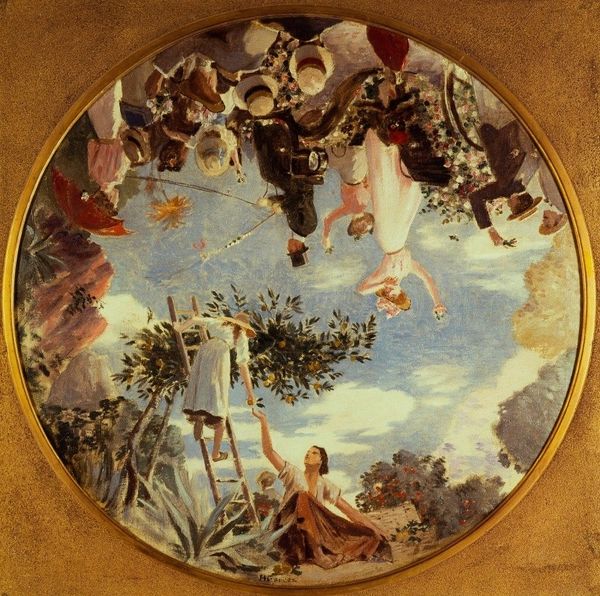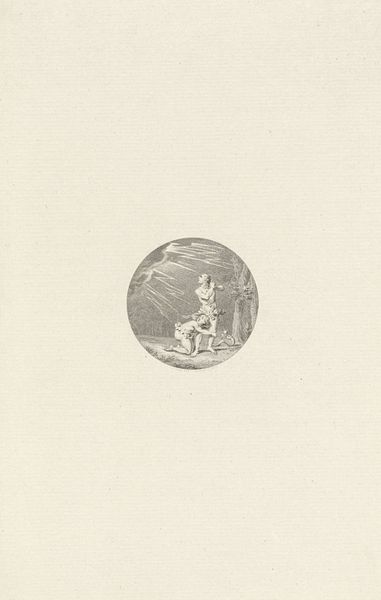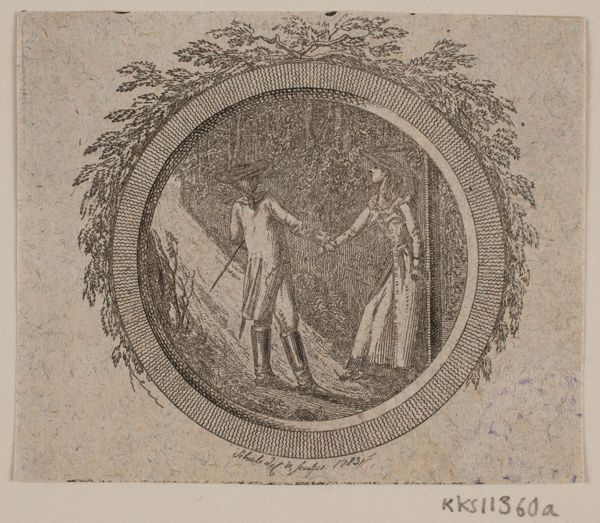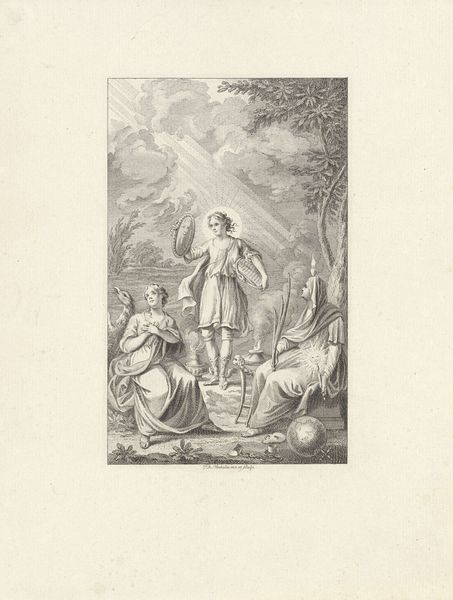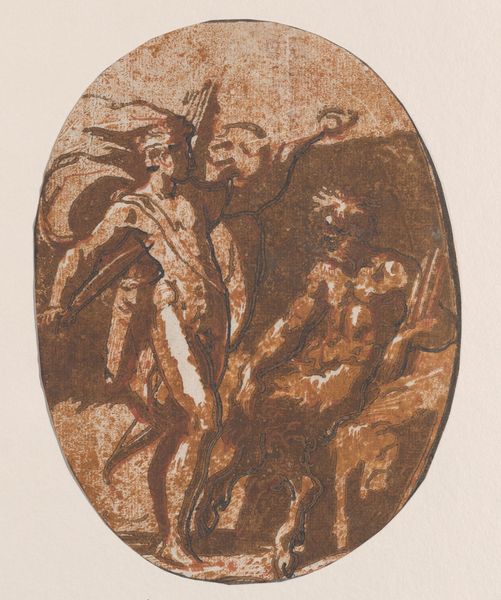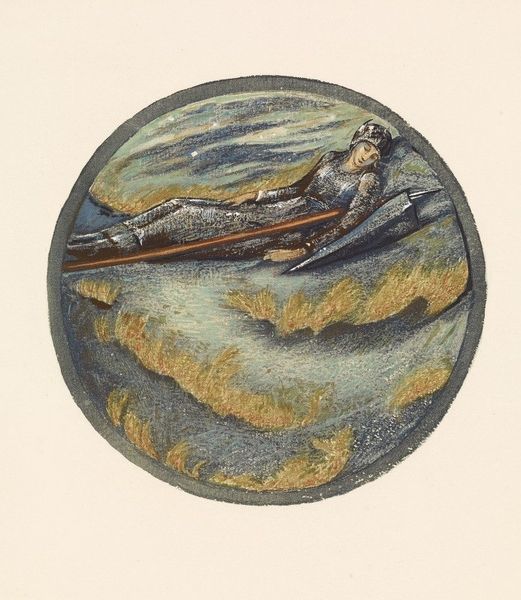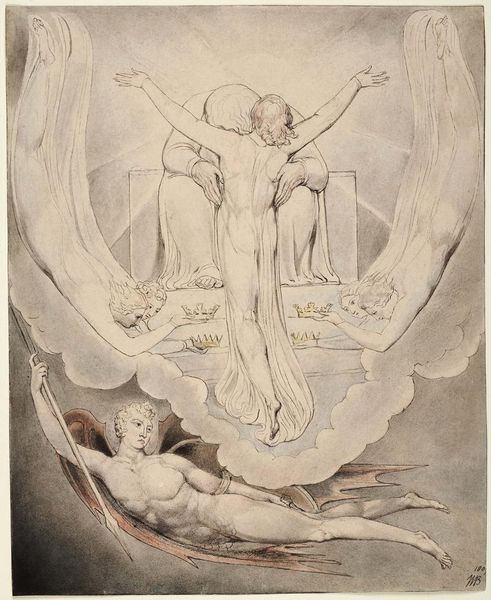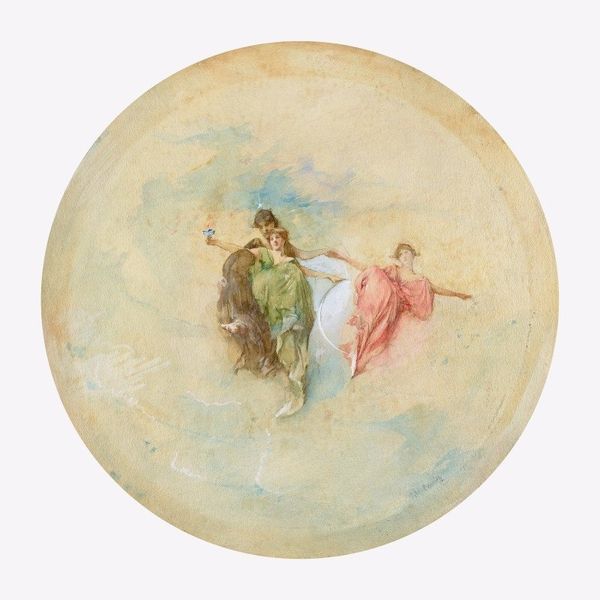
Copyright: Public Domain: Artvee
Editor: Here we have Edward Burne-Jones' "Jacob's Ladder," circa 1905, a drawing with colored pencil and watercolor. The upward movement and the soft palette give the work a hopeful, almost dreamlike quality. What strikes you most about the piece? Curator: Immediately, the meticulous linearity arrests my gaze. Consider the formal repetition of the ladder rungs against the seraphim, each strategically placed to advance Burne-Jones' structural ambition. Editor: Structural ambition? Curator: Indeed. The color contributes but does not dominate. The circular form itself is crucial—how does that shape and constrain the internal pictorial dynamics? And what is the effect? Editor: I see. It creates a sense of containment, like a vision held within a single, unified field. Is that a fair interpretation? Curator: Precisely. The subdued watercolor further tempers any potentially chaotic energy. Burne-Jones mastered controlled tonal variation. But notice also how color serves linear structure – drawing your eye along it and using color as contrast to build that tension.. Editor: So, even though it's a religious scene, the formal elements are the real focus here? Curator: Precisely! We witness the artist engaging directly with structural considerations. Composition becomes the work's very content. Editor: That’s fascinating. I hadn't considered how deeply form and structure dictate the meaning. Curator: Now you recognize and understand more of it, structurally. It becomes more enriching over time.
Comments
No comments
Be the first to comment and join the conversation on the ultimate creative platform.
